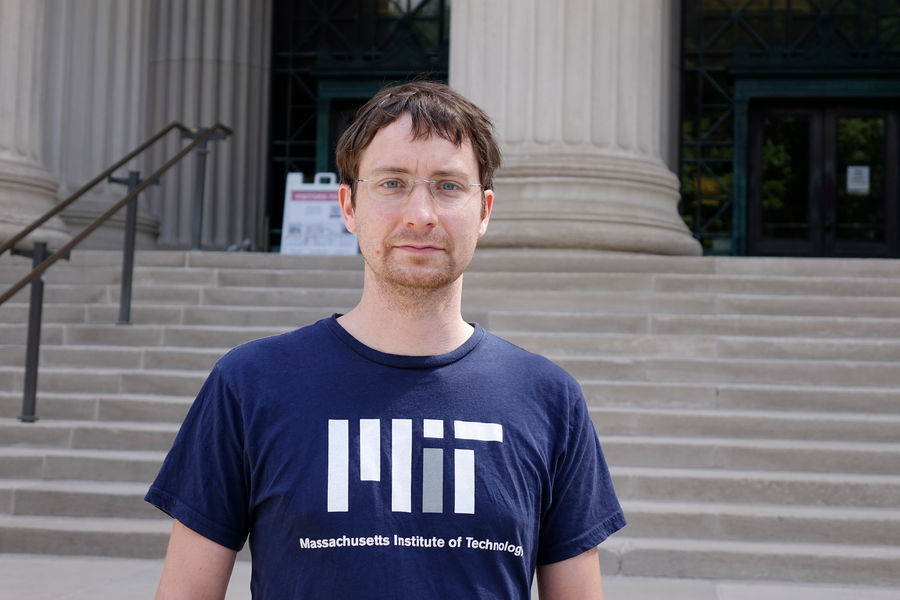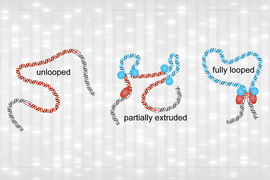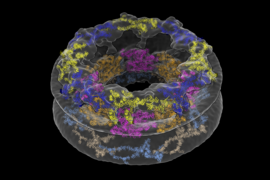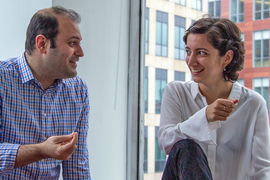How is DNA like a bridge? This question is not a riddle or logic game, it is a concern of Johannes Kalliauer’s doctoral thesis.
As a student at TU Wien in Austria, Kalliauer was faced with a monumental task: combining approaches from civil engineering and theoretical physics to better understand the forces that act on DNA.
Kalliauer, now a postdoc at the MIT Concrete Sustainability Hub, says he modeled DNA as though it were a beam, using molecular dynamics principles to understand its structural properties.
“The mechanics of very small objects, like DNA helices, and large ones, like bridges, are quite similar. Each may be understood in terms of Newtonian mechanics. Forces and moments act on each system, subjecting each to deformations like twisting, stretching, and warping,” says Kalliauer.
As a 2020 article from TU Wien noted, Kalliauer observed a counterintuitive behavior when examining DNA at an atomic level. Unlike a typical spring which becomes less coiled as it is stretched, DNA was observed to become more wound as its length was increased.
In situations like these where conventional logic appears to break down, Kalliauer relies on the intuition he has gained as an engineer.
“To understand this strange behavior in DNA, I turned to a fundamental approach: I examined what was the same about DNA and macroscopic structures and what was different. Civil engineers use methods and calculations which have been developed over centuries and which are very similar to the ones I employed for my thesis,” Kalliauer explains.
As Kalliauer continues, “Structural engineering is an incredibly versatile discipline. If you understand it, you can understand atomistic objects like DNA strands and very large ones like galaxies. As a researcher, I rely on it to help me bring new viewpoints to fields like biology. Other civil engineers can and should do the same.”
Kalliauer, who grew up in a small town in Austria, has spent his life applying unconventional approaches like this across disciplines. “I grew up in a math family. While none of us were engineers, my parents instilled an appreciation for the discipline in me and my two older sisters.”
After middle school, Kalliauer attended a technical school for civil engineering, where he discovered a fascination for mechanics. He also worked on a construction site to gain practical experience and see engineering applied in a real-world context.
Kalliauer studied out of interest intensely, working upwards of 100 hours per week to better understand coursework in university. “I asked teachers and professors many questions, often challenging their ideas. Above everything else, I needed to understand things for myself. Doing well on exams was a secondary concern.”
In university, he studied topics ranging from car crash testing to concrete hinges to biology. As a new member of the CSHub, he is studying how floods may be modeled with the statistical physics-based model provided by lattice density functional theory.
In doing this, he builds on the work of past and present CSHub researchers like Elli Vartziotis and Katerina Boukin.
“It’s important to me that this research has a real impact in the world. I hope my approach to engineering can help researchers and stakeholders understand how floods propagate in urban contexts, so that we may make cities more resilient,” he says.









